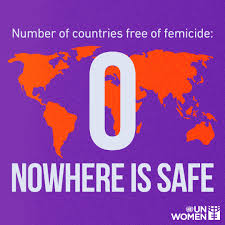
Introduction
Femicide, the intentional killing of women because of their gender, has become a critical issue in Canada. Recent statistics indicate that more than 160 women were killed by men in 2022, marking a troubling trend that requires immediate attention. This topic is critically relevant not just for the safety of women but also for the overall societal framework, as it reflects deeper issues of gender-based violence and systemic inequality.
The Current State of Femicide in Canada
According to a report by Status of Women Canada, femicide rates have been increasing in recent years, with Indigenous women being disproportionately affected. In 2022, Indigenous women represented 23% of femicide victims despite making up only 4% of the female population. The reports indicate a chilling atmosphere of fear among women, particularly in marginalized communities. The statistics also unveil underlying issues such as poverty, lack of education, and systemic discrimination that contribute to violence against women.
Various organizations, including the National Inquiry into Missing and Murdered Indigenous Women and Girls, have highlighted the urgent need for systemic change. Their findings emphasize the necessity of targeted actions to improve the safety and security of women across the country.
Community and Government Action
In response to this growing crisis, communities and advocacy groups are mobilizing to create dedicated resources and campaigns aimed at raising awareness and preventing gender-based violence. Initiatives such as “Take Back the Night” marches, educational programs in schools, and media awareness campaigns have gained traction.
On the governmental level, local and federal authorities have been pressured to allocate more resources toward prevention programs. Campaigns focusing on education about healthy relationships and safe reporting mechanisms are paramount. Legislation, such as the recent amendments to the Criminal Code regarding domestic violence, aims to enhance protection for survivors and hold perpetrators accountable.
Conclusion
The rising incidence of femicide in Canada is not just a statistic; it represents a societal failure that demands immediate comprehensive actions from both individuals and the state. Advocacy efforts and governmental reforms must go hand in hand to effectively tackle the root causes of gender-based violence. As awareness increases and community engagement amplifies, there is hope that with continuous effort, the disturbing trend of femicide can be addressed, leading to a safer environment for women across Canada.



